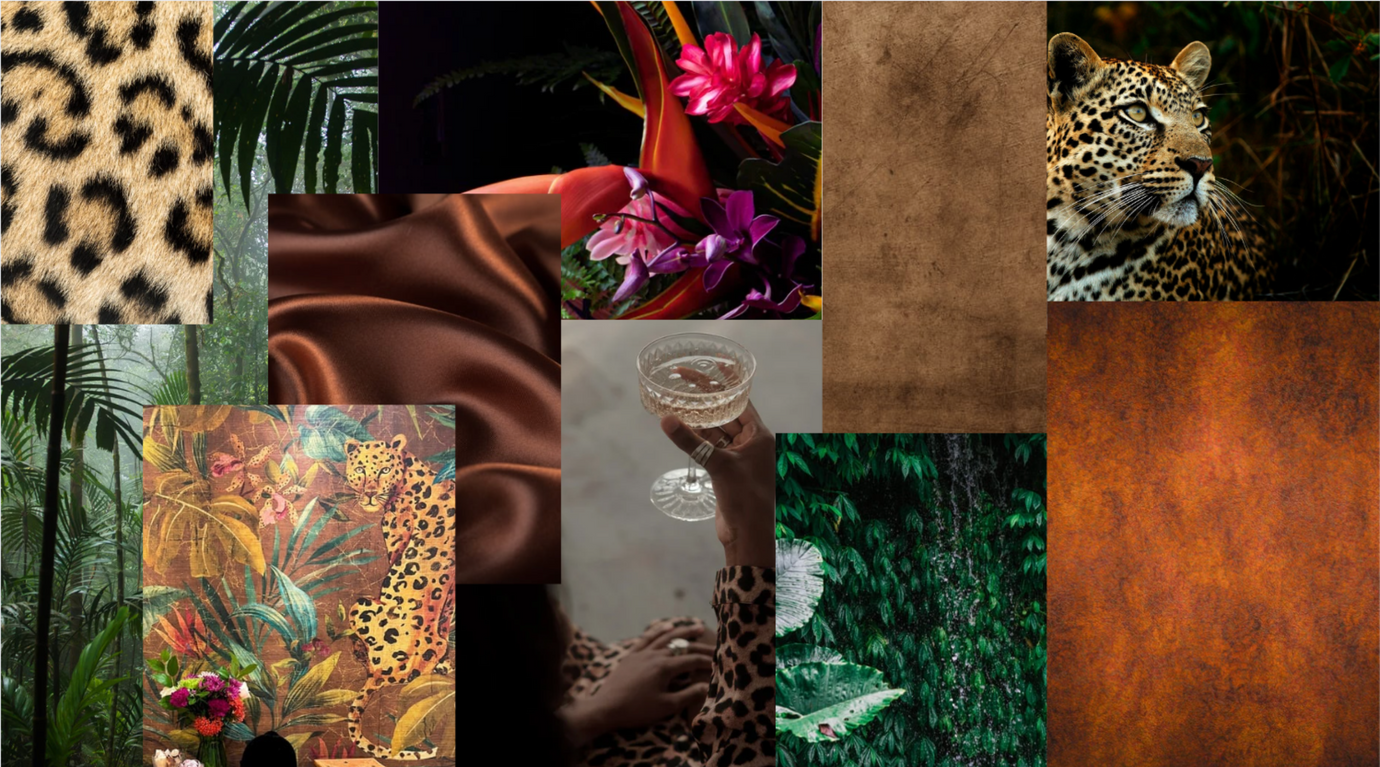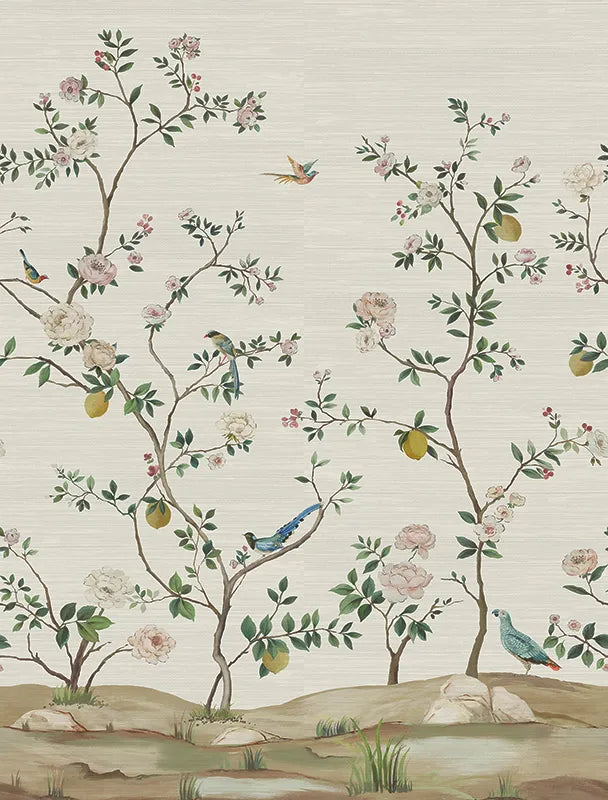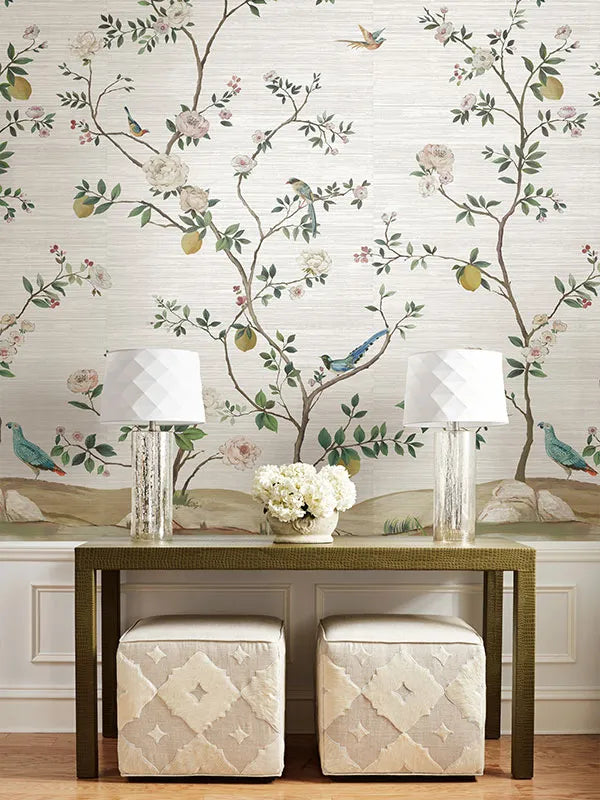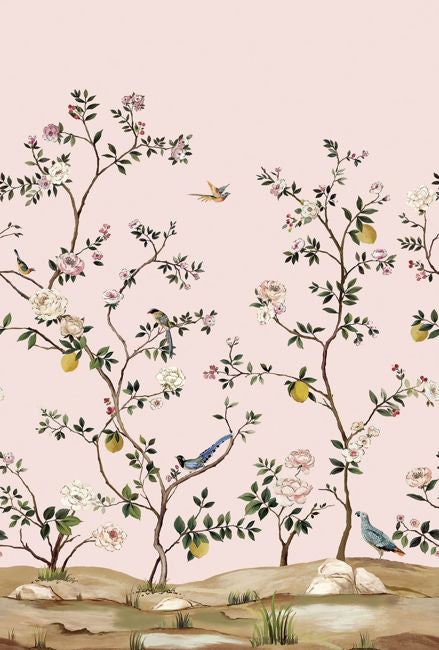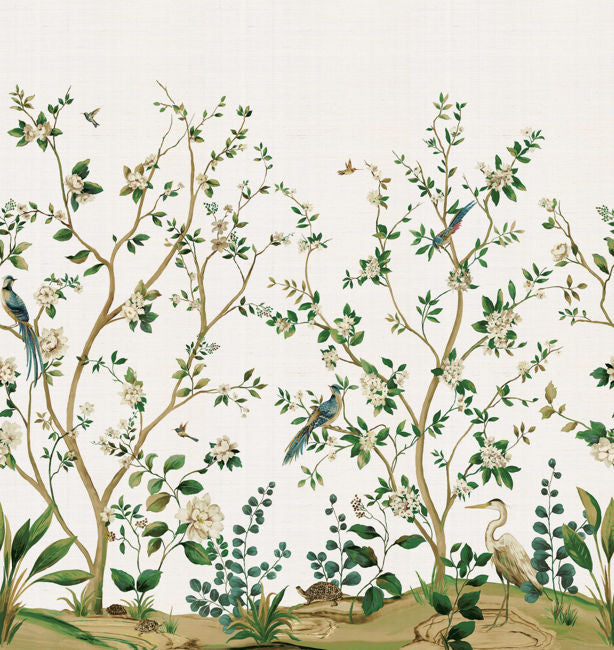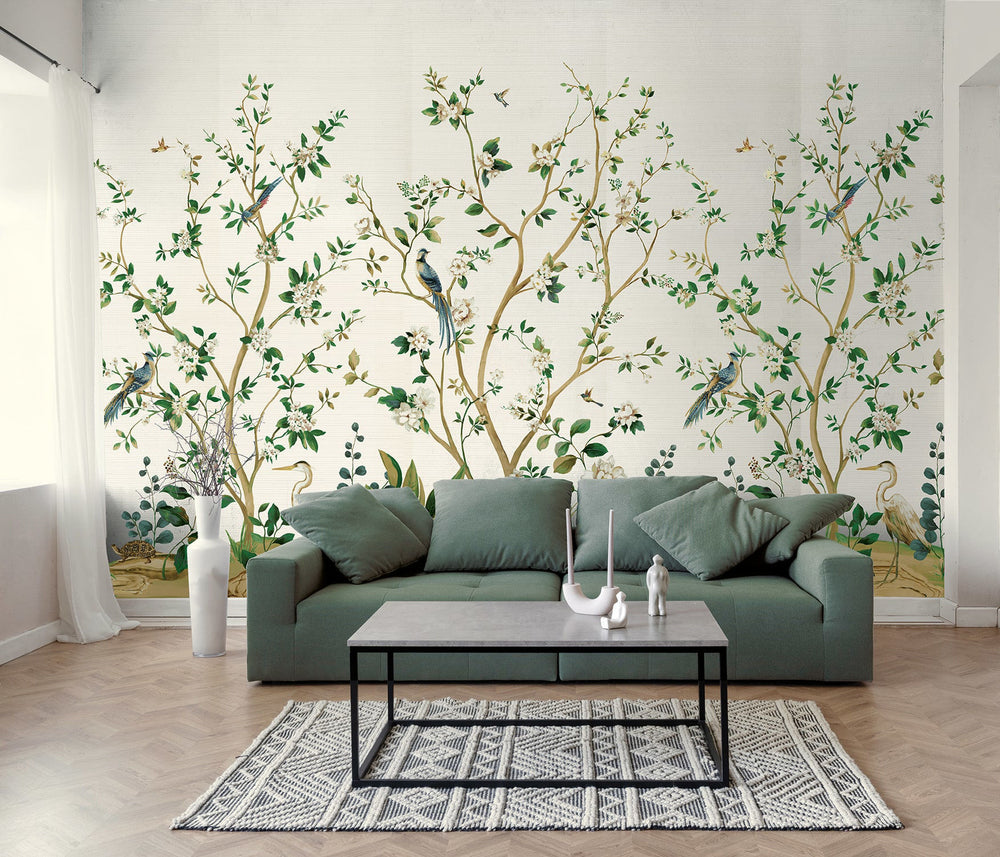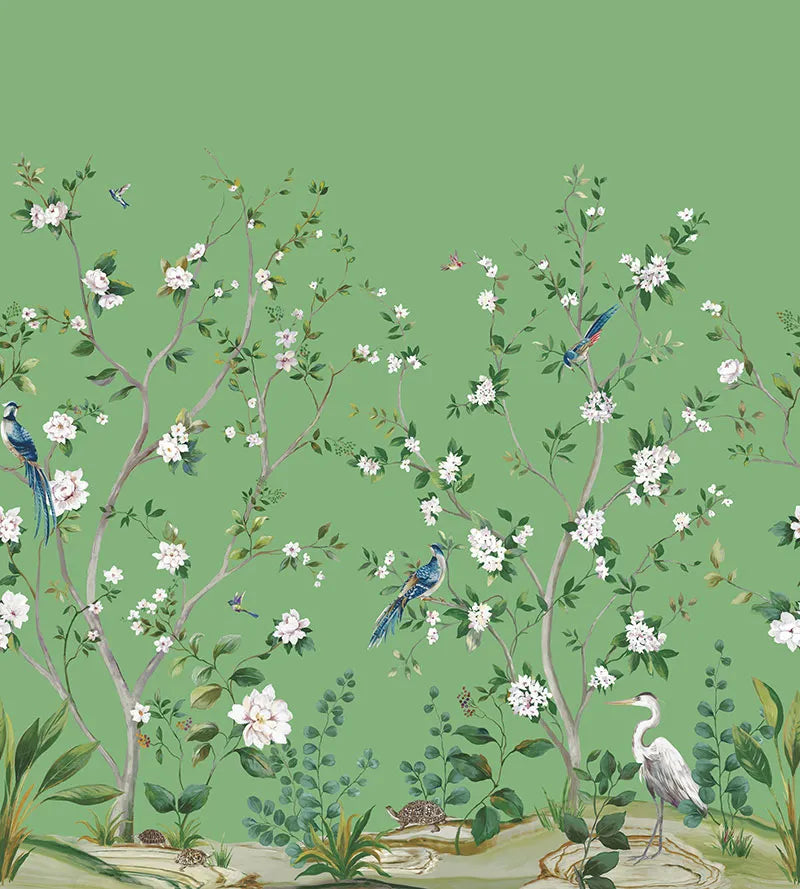The History of Block Printing Vintage Wallpaper
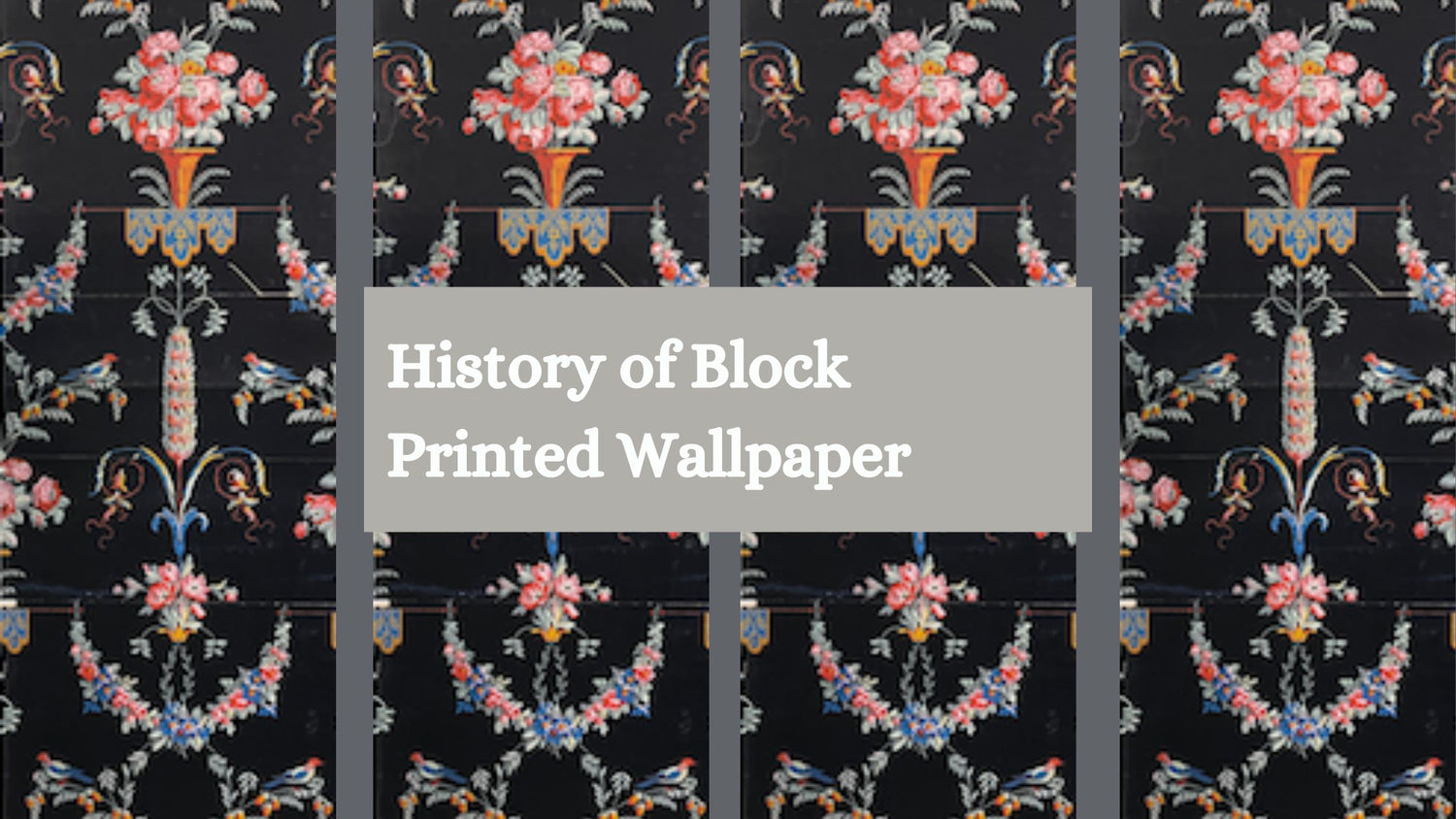
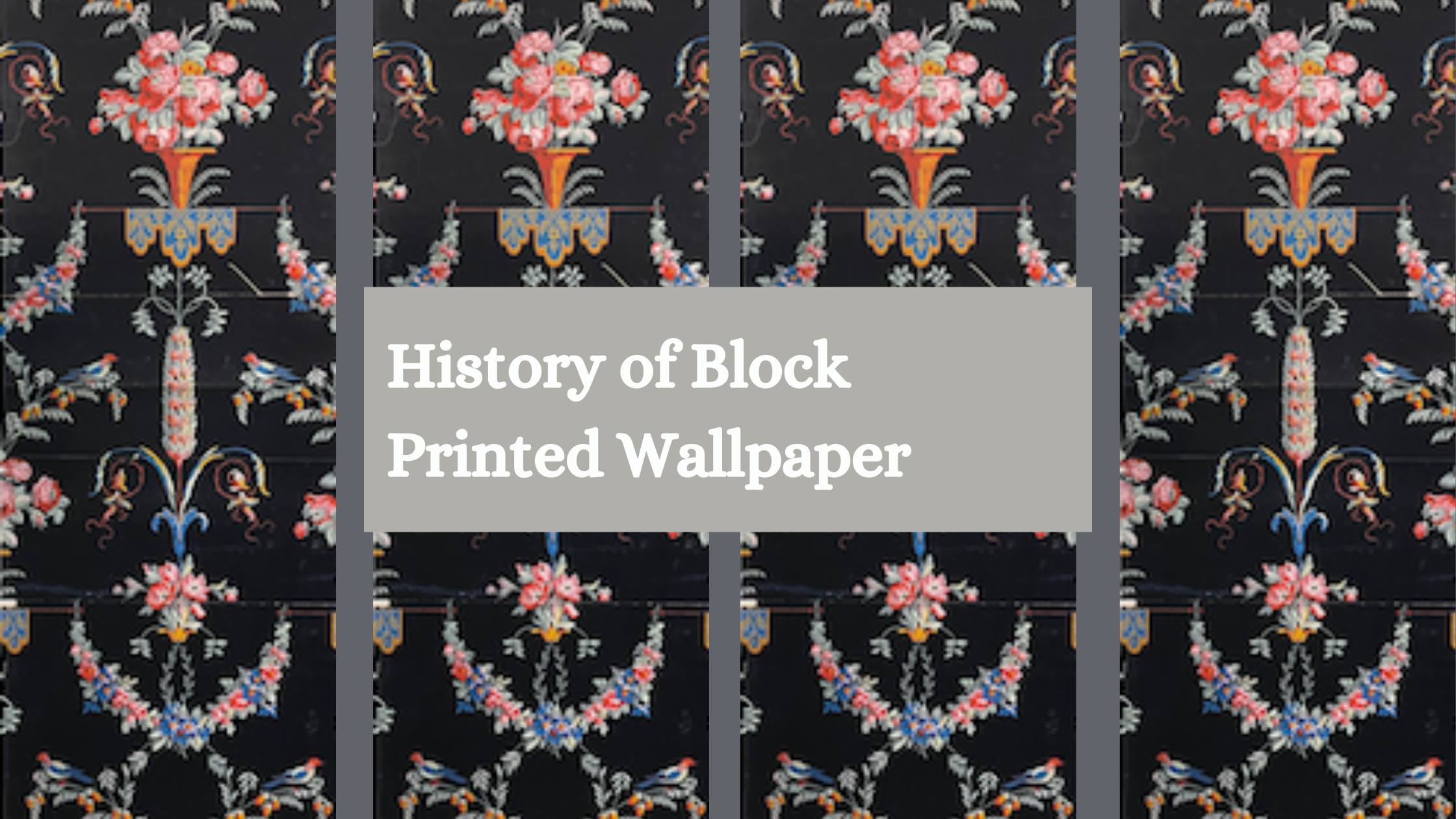
Vintage documents are often used to inspire and create new wallpaper and fabric designs.
In this video I am looking at a vintage French wallpaper document, an actual wallpaper from the early 1900’s. Before machines made wallpaper, it use to be hand block printed. This started in East Asia and China and was discovered through European and English trading companies when trading goods from China such as tea and sugar. Once block printing was discovered, it finally made its way to England and France with Royalty, who loved tapestries, silk paintings and these block printed papers and fabrics.
How do you create a block printed pattern?
Each color in a design is traced and carved onto a wooden block. The raised image was then rolled with ink and then transferred onto paper or fabric. Each block represented one color in the design.
Each block had little registration marks which are called cross marks. This way, printers could line up each color in order to create a design. The registration marks on each block kept all the color rotation for a pattern in order.
For example, in this vintage wallpaper document, the rose and any other light pink area in the design would be carved onto 1 block. Then the medium pink tone in the design would be carved on a separate block. Each color was a block.
Often, vintage wallpapers and fabrics could have up to 30 colors in a design.
For example, in this vintage document, each block represented one red color of the flower petals to create the flower. So the colors would build up onto each color, like a pink onto a medium pink onto a red. Just think of potato printing.. just like that but in big blocks where an entire design was carved into a large block of wood.
Vintage wallpaper is still printed today
Today, Zuber in France still prints vintage murals from antique blocks which are extremely rich in color and expensive because they are all hand made, hand printed. Printing is very laborious as each block had to be rolled with paint and then stamped onto the paper repetitively but the end result is rich in color and in layers often found in French murals from Zuber.
Block printing was and is today, an expensive printing process but it brings a lot of value and a special texture to a pattern. As the ink is pressed onto the paper, it creates a squished edge of color around the shape which gives it a unique hand pressed look. This wallpaper pattern has at least 12 colors, which means it was made with 12 wooden blocks.
Wallpaper made popular
There was a famous wallpaper printer and book maker, William Morris from England who helped make wallpaper popular because he was printing wallpaper for royalty. Royalty loved wallpaper and they often decorated their palaces full with colorful block printed wallpapers. Royalty set the decorating trend with wallpaper and it set a trend off into France and Europe and then eventually it came to America.
Europeans were inspired by how royalty decorated with wallpaper and the average person wanted wallpaper in their homes. Eventually, cheaper wallpapers were made as newer techniques for printing made it more accessible for everyone and more affordable.
It wasn’t just for the rich and royalty any longer.
Thank goodness as we LOVE Wallpaper!


